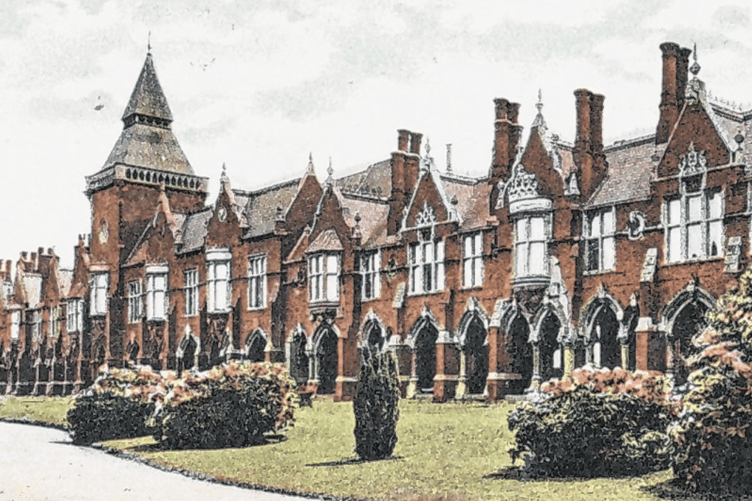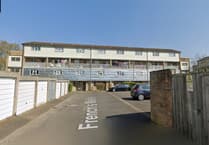”A LANDMARK that had been conspicuous in Woking for the past 83 years has just been removed.”
That was the introduction to a story in the News & Mail on May 14, 1948.
Under the heading Another landmark goes, the report was on the removal of the spire, for safety reasons, from the building that was originally the Royal Dramatic College in Maybury.
It was a retirement home for actors and actresses.
Built in a kind of Victorian-Tudor style, it was constructed to accommodate ten men and ten women.
It had a large central hall and a pillared cloister along its frontage.
The foundation stone was laid on June 1 1860 by Prince Albert, the first residents arrived in September 1862 and the home was officially opened in 1865 by the then- Prince of Wales.
By 1883, it had been bought by Dr Gottlieb Leitner for his Oriental Institute for the study of Oriental literature and languages. His vision included the addition, in 1889, of the equally impressive Shah Jahan Mosque.
After Dr Leitner’s death in 1899, the Oriental Institute closed and industry moved in.
From 1909 to 1947, part of the site was occupied by the Electrical Accumulator Supply Company.
From the time of the First World War to 1924, Martinsyde Aircraft Ltd was at the site. And from about 1926, James Walker & Co Ltd had its large factory, known as the Lion Works, there.
Of the spire being pulled down, the News & Mail said: “This is the old spire that surmounted the clock tower at the entrance to what is now the company’s [James Walker & Co’s] offices and which forms part of the original structure.
“Many local residents still remember the college building in its original form, with its gardens reaching down to the railway, as it was not until 1915, owing to the calls of the First World War, that it lost its appearance by the establishment of an aeroplane factory in the grounds.
“In this process, both wings of the old building were pulled down, but the central portion remained in its original form and appearance.
“[James Walker & Co] have done everything possible to preserve the character of what remained of the original Dramatic College building.
“The main entrance to the offices, the clock tower over the entrance to the gallery and the central hall are still much as they always were, but in the interests of safety the spire over the clock has had to come down.”
A News & Mail reporter had spoken to Mr WA Dixon, the son of the managing director of the Lion Works.
He said that as a result of a surveyor’s examination, it was decided to strip the fancy stonework from the clock tower. It was then found “dry rot and worm had attacked the double-timbered spire”, so it was decided that the spire was unsafe and had to be taken down.
A replacement was not sought as it was said to have been too expensive. It was decided to “square off” the central tower with a concrete roof. Some of the ornamental stonework on the front of the building that had become loose was also removed.
The report said that Mr Dixon had been recently elected to Woking Council as councillor for the Goldsworth ward.
It added: “A very interesting part of the college still preserved is the central hall, which was once apparently open from the ground floor to the roof.
“During Martinsyde’s occupation, however, in the First World War, a concrete floor was erected halfway up to divide it into two floors.
“This hall, which is used as a boardroom by the present company, retains most of its original features and has been much improved by Messers James Walker by the addition of oak panelling, a large fireplace and a parquet floor.
“At either end of this room are stained-glass windows, representing respectively the tragedies and comedies of Macbeth.
“One hopes it may be possible to preserve for a long time to come much which will still identify these buildings with the college, which forms so interesting a link with Woking’s past.”
James Walker & Co’s sealing technology products have been supplied to a wide range of industries around the world. It was one of Woking’s largest employers.
Production in Woking was scaled down in the 1990s, and then concentrated on the firm’s factory in Cumbria.
Although the company’s office headquarters remain in Woking, the factory site has been developed into the Lion Retail Park.
My thanks to Mark Coxhead for finding the story in the back copies of the News & Mail on microfilm at the Surrey History Centre in Woking.





Comments
This article has no comments yet. Be the first to leave a comment.